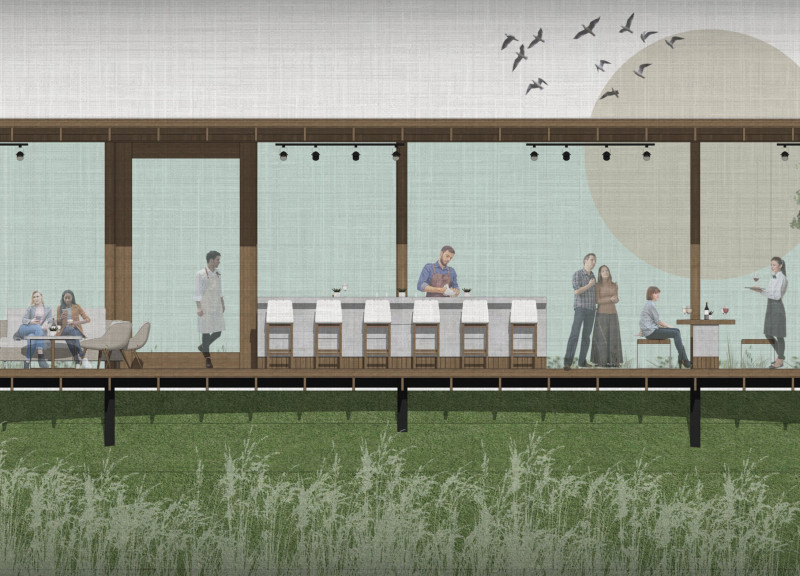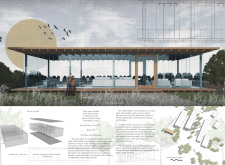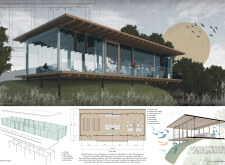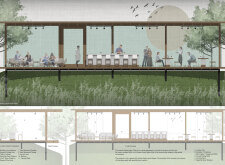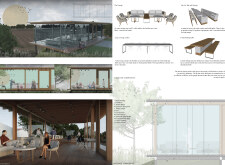5 key facts about this project
The Glass Box functions primarily as a wine tasting area but is versatile enough to host educational events and corporate meetings. It is essential that the layout supports an engaging experience with designated zones for dining, service, and relaxation. The open floor plan enhances movement within the space, ensuring a seamless flow for guests.
Sustainable design elements are integral to The Glass Box. Natural ventilation is achieved through strategically placed windows that facilitate airflow, while low-emissivity (Low-E) glass contributes to energy efficiency. The roof extends beyond the glass façades to provide shade, promoting comfort during outdoor activities.
Design Approaches and Materiality
Unique to this project is its commitment to transparency and interaction with the environment. The extensive glazing not only serves as a visual connection to the vineyard but also reflects the surrounding changing light conditions, creating a dynamic atmosphere throughout the day. This architectural approach contrasts with more traditional wine tasting rooms, which often prioritize solid materials and enclosed spaces.
The chosen materials further enhance its unique identity. The wood used in the structural beams and interior finishes adds a natural warmth, aligning with the organic essence of winemaking. Steel columns support large glass panels, ensuring structural integrity while maintaining a minimalist aesthetic. The combination of concrete for countertops provides a modern touch, showcasing durability.
Spatial Configuration and Environmental Integration
The configuration of The Glass Box emphasizes accessibility to nature, with potential outdoor viewing decks that encourage guests to engage with the vineyard landscape directly. This connection fosters a deeper appreciation for the natural environment, integral to wine culture.
Overall, The Glass Box stands out for its innovative use of transparent materials and its versatile design, which accommodates a variety of functions while promoting a strong link to its surroundings. The architectural design considers not only aesthetic aspects but also acknowledges environmental impact and guest experience.
To gain further insights into the various architectural elements like architectural plans, architectural sections, and architectural designs associated with The Glass Box, it is recommended to explore the project presentation for a comprehensive understanding of this thoughtful design endeavor.


